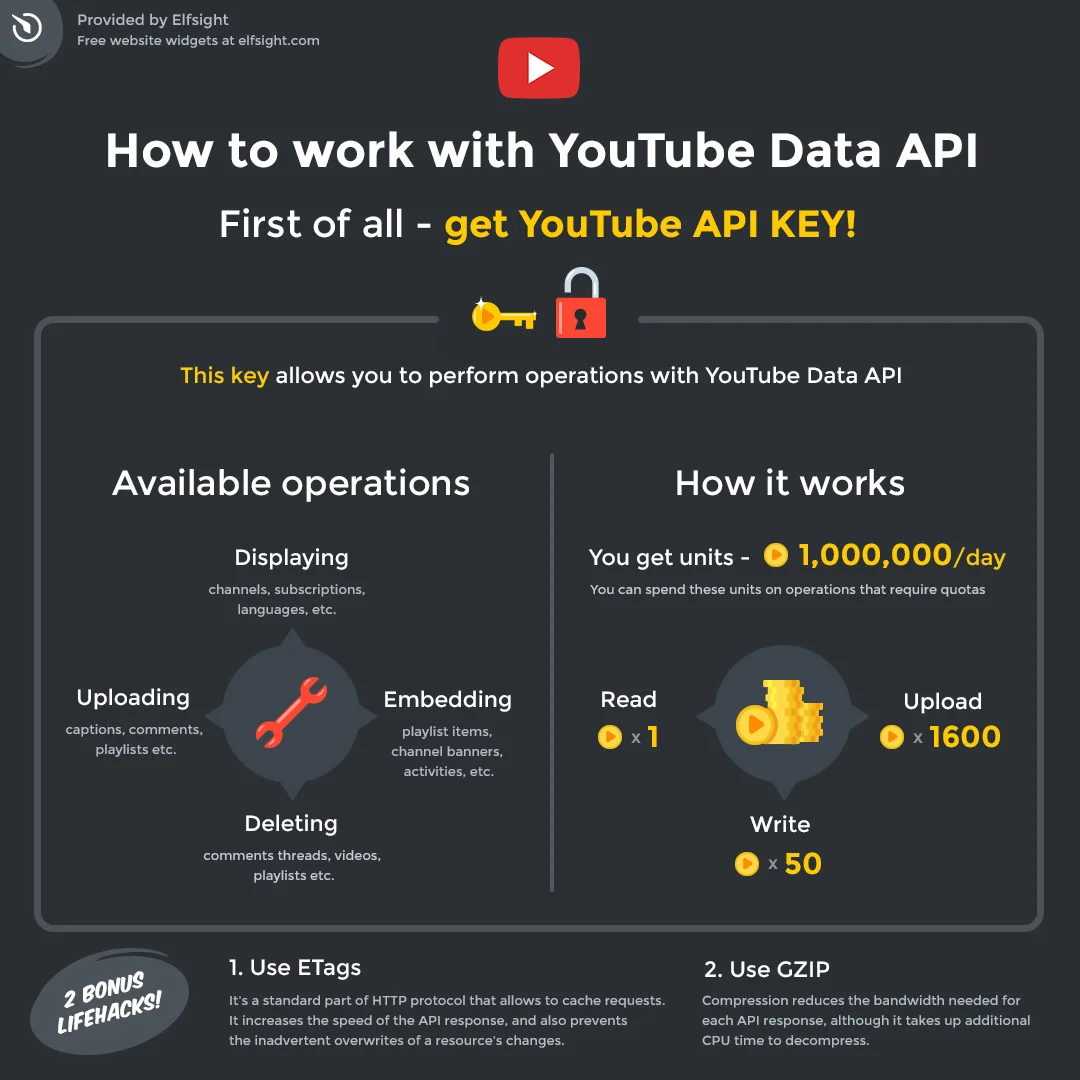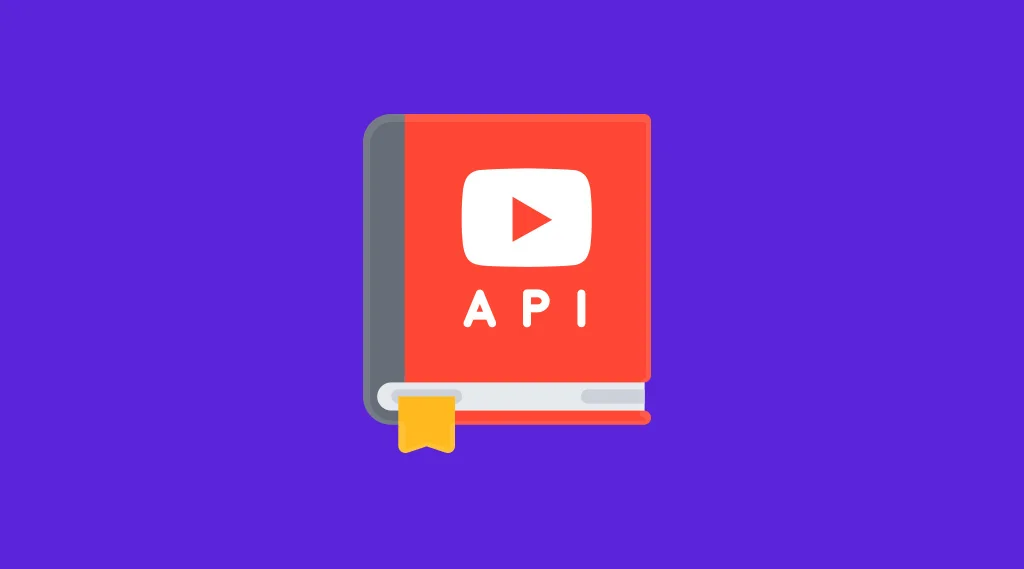
Where is YouTube API applied?
In what fields is YouTube Data applied? First of all, we’re talking about the developers of website products and unique solutions. The other user groups are not so large: webmasters who use YouTube as the source of content for their sites, and researched who need to conduct a research with a large audience. API key usage examples:• Plugin
Add API Key to ensure a YouTube plugin’s stable performance.• Your Product
Add the key to your product to get access to YouTube Data.• Parsing
Use the key to parse YouTube data in a more efficient way.See also: detailed guide on getting a YouTube API Key
YouTube API limits
These limits are the restrictions to requests, sent out with a YouTube API. When the quota on your personal YouTube API Key is exceeded, your actions will be suspended until you get a new quota.You can find out the quota required for each action in the quota calculator.Daily quota: 1 000 000 units. Cost of operations:
- Read operation – 1 unit;
- Write operation – 50 units;
- Video upload – 1600 units.
What can you do with the 1 000 000 units a day limit:
– 200 000 read operations; – 10 000 write operations and 90 000 read operations; – 400 video uploads, 1500 write operations and 50 000 read operations; *operations that each retrieve two resource partsActions available with YouTube API
YouTube allows to apply 4 different methods to each information source:- List (GET) – Returns a list of information’s that match the API request parameters.
- Insert (POST) – Uploads an element to YouTube and optionally sets the video’s metadata.
- Update (PUT) – Updates a video’s information.
- Delete (DELETE) – Deletes a YouTube element.
| List | Insert | Update | Delete | |
| activity | + | + | – | – |
| caption | + | + | + | + |
| channel | + | – | – | – |
| channelBanner | – | + | – | – |
| channelSection | + | + | + | + |
| comment | + | + | + | + |
| commentThread | + | + | + | – |
| guideCategory | + | – | – | – |
| i18nLanguage | + | – | – | – |
| i18nRegion | + | – | – | – |
| playlist | + | + | + | + |
| playlistItem | + | + | + | + |
| search result | + | – | – | – |
| subscription | + | – | – | – |
| thumbnail | – | – | – | – |
| video | + | + | + | + |
| videoCategory | + | – | – | – |
| watermark | – | – | – | – |
Keep in mind that there are additional requirements for the videos uploaded via API. Read more: YouTube requirements to uploaded videos.
Unleash YouTube Gallery catalog of ready-to-use templates
Template Catalog
Explore 50+ YouTube Gallery templates
Check out more of ready-made templates for any use case or build your own one!
Add a YouTube gallery with embedded playlists to your website for organized video browsing.
Creating a YouTube widget lets your website users subscribe so you can receive new followers.
Add a feed from YouTube to your website for fresh, dynamic content.
Create a YouTube template enabling you with video carousels for an engaging website display.
Creating a YouTube playlist on the sidebar simplifies access to videos on your website.
Create an embedded YouTube widget on your website for rich channel content access.
Add a dynamic YouTube widget with a slider to your website for instant video appeal.
No Suitable Template?
You can easily assemble the widget you need using our simple-to-use configurator.
Resource types
Below are the resource types and the information you can get from these resources.| activity | Likes, marking videos as favorites, channel videos and other activities of a specific user. |
| channel | Channel information. |
| channelBanner | Identifies the URL of a channel’s banner image. |
| channelSection | Channel’s latest uploads, most popular videos, playlists and other sets of videos from the channel. |
| guideCategory | Channel category, as defined by YouTube based on the content, popularity and other factos. |
| i18nLanguage | Identifies user interface language. |
| i18nRegion | Identifies the perferrable content geographical area. |
| playlist | Provides one playlist (set of videos). |
| playlistItem | Identifies a specific video from the playlist and the way it is used in the playlist. |
| search result | Video, playlist or channel that match the search criteria. |
| subscription | User subscription information. |
| thumbnail | Identifies the resource’s thumbnail image. |
| video | Provides one specific video. |
| videoCategory | Identifies the uploaded videos category |
| watermark | Video watermark during playback. |
Optimizing work with YouTube API
- Use ETags – a standard part of HTTP protocol that lets you cache the requests, thus making the API reply faster, and also prevents your apps from writing the changes from 3rd-party APIs.
- Use GZIP – compression that reduces the cost of each API response, but does spend additional CPU resources for decompressing.








